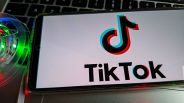The first product to come out of the still-ongoing merger between Tesla and SolarCity is the Solar Roof, and it could be unveiled on Oct. 28.
Elon Musk, chief executive and founder of Tesla Motors, Inc. announced on Twitter Thursday morning that the solar roof and a Tesla charger will be unveiled Oct. 28. The so-called solar roof will integrate with version 2.0 of Tesla's PowerWall solar storage.
Aiming for Oct 28 unveil in SF Bay Area of new Tesla/SolarCity solar roof with integrated Powerwall 2.0 battery and Tesla charger.
— Elon Musk (@elonmusk) Sept. 22, 2016
Up until now, little to no details have emerged specifically elaborating on Musk's plans to build a roof that could integrate with solar panels which he first announced during SolarCity's second quarter earnings call in August.
Amid surrounding lawsuits brought on by delays in Tesla's partnership with SolarCity, Musk has chosen to push forward with the announcement of the solar roof's unveiling, seemingly a joint effort to synergize both of the company's respective specializations.
If Musk honors word, we might be able to see a new iteration of a solar roofing system, akin to what he hopes to achieve. Rooftop panels are conventionally appended onto roofs via mounting systems, which he is not very fond of. Aside from energy consumption efficiency, Musk has particularly given due importance with regard to the aesthetics of the solar panels, noting that not only will it give homeowners free energy, the household itself will acquire an increased resale value because of the overall aesthetic appeal of the solar-paneled roof.
"It's a solar roof, as opposed to a module on a roof," said Musk, noting that the product will not stand as a peripheral for the roof. It will actually be the roof itself. "I think this is really a fundamental part of achieving differentiated product strategy, where you have a beautiful roof."
The solar panels aren't the only ones to be unveiled next month, as Musk also plans to showcase the "Powerwall 2.0," Tesla's second-generation energy storage product. Musk unveiled the Powerwall in 2015, a lithium-ion home battery module that uses electricity generated by solar panels. It's essentially a backup solution should power outages occur. The Powerwall charges during nonpeak hours, and switches into gear during peak hours, usually on evenings.
Tesla's partnership with SolarCity is part of Musk's grand scheme of things, nicknamed "Master Plan, Part Deux." The elaborate index contained Musk's plans written 10 years ago, including automobile-related endeavors and plans to provide solar power.
By some measure, he also explains the reasoning behind the merger: per Tesla's blog post, they intend to "[c]reate a smoothly integrated and beautiful solar-roof-with-battery product that just works," and they can't do so "if Tesla and SolarCity are different companies, which is why we need to combine and break down the barriers inherent to being separate companies."
How the new Tesla charger, also being announced alongside the solar roof, will fit into everything is still up for speculation. Expect due coverage on both fronts as Oct. 28 looms closer.
Photo: Web Summit | Flickr
ⓒ 2025 TECHTIMES.com All rights reserved. Do not reproduce without permission.




